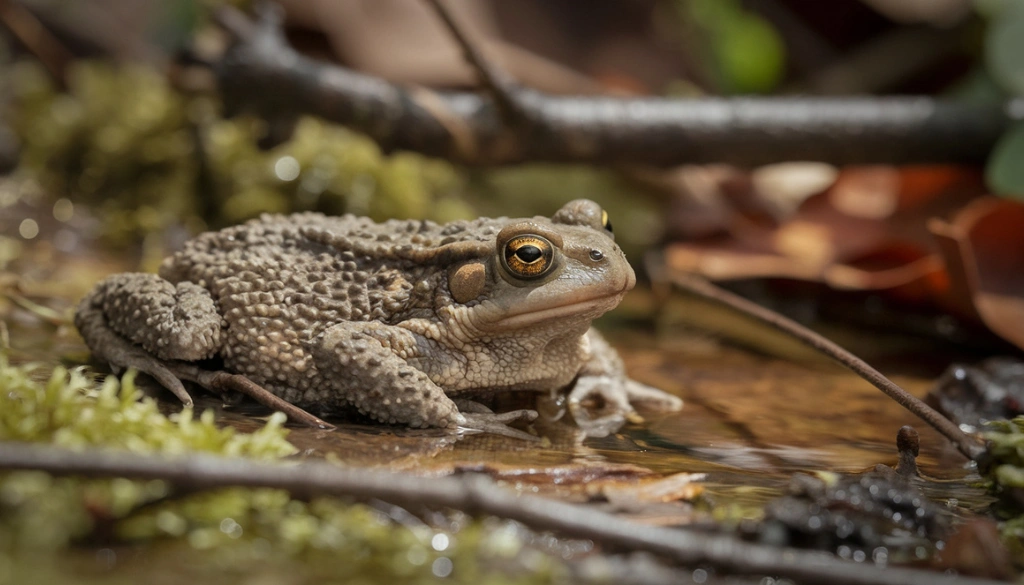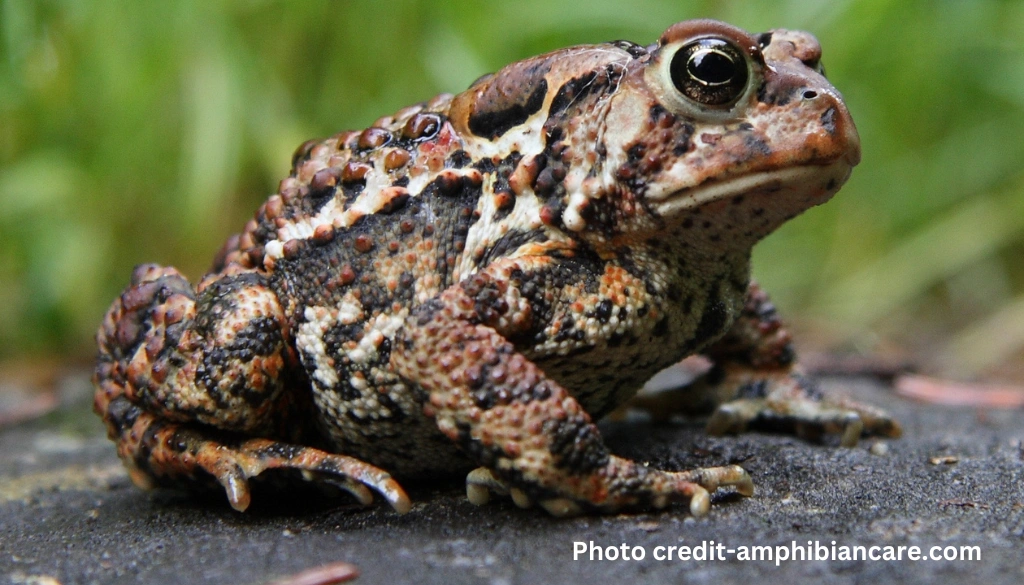
American Toads: Their Diets and Natural Habitats Uncovered
American toads are interesting creatures that live in different habitats like wetlands, forests, and ponds. They are nocturnal, which means they come out at night to hunt for food. Their diet mainly consists of insects and other invertebrates, such as crickets, worms, and slugs. This diet helps them thrive in their ecosystems, where they play a critical role as both predators and prey.
Understanding the diets and habitats of American toads helps us appreciate their importance in nature. By learning about their life cycle, from eggs to tadpoles to adult toads, we can see how they adapt and survive in different environments. Let’s explore deeper into the world of American toads and find what makes them so special!
Dietary Habits of American Toads: What They Eat and How They Hunt

The American toad (Anaxyrus americanus) is a interesting amphibian inhabiting diverse environments such as wild wetlands, ponds, and forests. Its dietary habits are mainly insectivorous, with a focus on different insects. As opportunistic feeders, adult toads consume:
- Insects: Crickets, beetles, and flies
- Worms: Earthworms and slugs
- Other invertebrates: Snails and spiders
Toads primarily hunt at night, using their sticky tongues to quickly snatch prey. This nocturnal behavior not only boosts their foraging success but also helps them avoid many predators. On the contrary, tadpoles start their lives as herbivores, feeding on aquatic plants and algae.
As they mature, American toads play a critical role in their ecosystems by regulating insect populations. But, threats like habitat loss and pollution endanger their survival. Conservation efforts are necessary to protect biodiversity and make sure the future of these remarkable amphibians.
| Diet Composition | Examples of Prey |
|---|---|
| Insects | Crickets, beetles, flies |
| Worms | Earthworms, slugs |
Natural Habitats: Where American Toads Live
The American toad (Anaxyrus americanus) thrives in diverse natural habitats across North America. These adaptable amphibians are commonly found in wildlife-rich areas like wetlands, ponds, and forests, which provide the moisture and food necessary for their survival. Adult toads primarily feast on insects, slugs, and earthworms, while their tadpoles consume aquatic plants and algae.
During the breeding season in spring, American toads migrate to ponds to reproduce. Females lay thousands of eggs, which hatch into tadpoles. These tadpoles undergo transformation, transforming into juvenile toads. This life cycle plays a critical role in maintaining biodiversity within their ecosystems.
As nocturnal hunters, American toads forage at night and hibernate during colder months, seeking shelter in burrows or beneath logs. Their remarkable adaptability to different environmental conditions enhances their resilience, yet habitat conservation is critical for their ongoing survival.
| Habitat Type | Key Features |
|---|---|
| Wetlands | Damp environments abundant in water sources |
| Ponds | Critical breeding grounds and food sources |
| Forests | Offer shelter and hunting opportunities |
Life Cycle of American Toads: From Eggs to Adults
The American Toad embarks on a interesting life cycle each spring. Adult toads migrate to wetlands and ponds to breed, where females lay thousands of eggs in the water. These eggs hatch into tiny, wriggly tadpoles.
Initially, tadpoles are herbivorous, consuming algae and aquatic plants. As they grow, they undergo transformation, developing legs and losing their tails. This transformation marks their transition into adult toads, a process lasting several weeks to months, depending on environmental conditions.
Once mature, American Toads become insectivorous and nocturnal, hunting insects like beetles and slugs at night. They play a critical role in their ecosystem by controlling insect populations. But, they face threats from predators and habitat loss.
During colder months, adult toads hibernate in burrows, ensuring their survival through winter. This remarkable life cycle not only highlights the resilience of American Toads but also emphasizes the importance of conservation efforts to protect their habitats and biodiversity.
To learn more about amphibians and their unique adaptations, explore this article on tree frogs.
Seasonal Behavior and Hibernation Patterns
American toads, or Anaxyrus americanus, display interesting seasonal behavior and hibernation patterns. These adaptable amphibians inhabit diverse environments, including wildlife wetlands, ponds, and forests. In spring, they emerge from hibernation in response to rising temperatures and increased moisture, marking the beginning of their breeding season. During this time, they gather near water sources to reproduce.
After hatching, the young toads start as tadpoles, feeding primarily on aquatic plants. As they undergo transformation, they transition into insectivorous adults, consuming insects, worms, and slugs. Their nocturnal foraging not only helps them avoid predators but also maximizes their food intake. In winter, American toads seek overwintering sites, such as self-dug burrows or crayfish burrows, to escape the harsh conditions.
Understanding these hibernation patterns is critical for conservation efforts and maintaining biodiversity. The ecological importance of their seasonal behavior highlights the need for habitat restoration and protection. By studying these patterns, we gain valuable insights into the delicate balance of ecosystems and the critical role American toads play within them.
Predators and Prey: The Role of American Toads in the Ecosystem
The American toad (Bufo americanus) plays a critical role in our ecosystems as both a predator and prey, helping to maintain ecological balance. Adult toads are insectivorous, consuming up to 3,000 insects each month, including beetles, crickets, and ants. This impressive diet effectively controls insect populations, benefiting gardens and crops.
In their natural habitats—wildlife-rich wetlands, ponds, and forests—American toads undergo a interesting life cycle. They begin as eggs, hatch into tadpoles, and transform through transformation into adults. Curiously, tadpoles are herbivores, feeding on aquatic plants like algae.
As nocturnal creatures, toads seek refuge in burrows during the day to avoid predators such as snakes and birds. They also hibernate in winter, showcasing their adaptability to different environmental conditions.
Conservation efforts are necessary to protect these amphibians and their habitats. By understanding their role in the food web, we can appreciate their contributions to biodiversity and the in general health of ecosystems.
| Life Stage | Diet |
|---|---|
| Tadpole | Herbivorous (algae, aquatic plants) |
| Adult | Carnivorous (insects, spiders, worms) |
Conservation Efforts for American Toads and Their Habitats
Conservation efforts for the American Toad (Anaxyrus americanus) are critical for preserving its habitats and ensuring its survival. These toads thrive in warm wetlands, ponds, and forests, where they feed on insects, spiders, and earthworms. Understanding their life cycle is necessary; they start as tadpoles in water and undergo transformation into adult toads.
Support for these amphibians can take many forms:
- Wetland Preservation: Protecting these ecosystems is critical for maintaining the toads’ natural habitats.
- Habitat Restoration: Rehabilitating damaged areas boosts breeding and feeding opportunities.
- Environmental Education: Raising awareness about biodiversity fosters a community committed to wildlife protection.
Monitoring species populations and reducing pollution are also critical. Climate change poses significant threats, impacting their habitats. By addressing these challenges, we can actively aid in the conservation of amphibians and their ecosystems.
During colder months, American toads hibernate, demonstrating their adaptability. By protecting their environments, we support not only the toads but also the entire ecosystem they inhabit.
Summing up
American toads play an significant role in our ecosystems. They help control insect populations by eating many kinds of bugs. By protecting their habitats, we support not just the toads, but also the health of our environment. Simple actions like testing wetlands clean and planting native plants can make a big difference. Together, we can make sure that these interesting creatures continue to thrive in our backyards and beyond.
